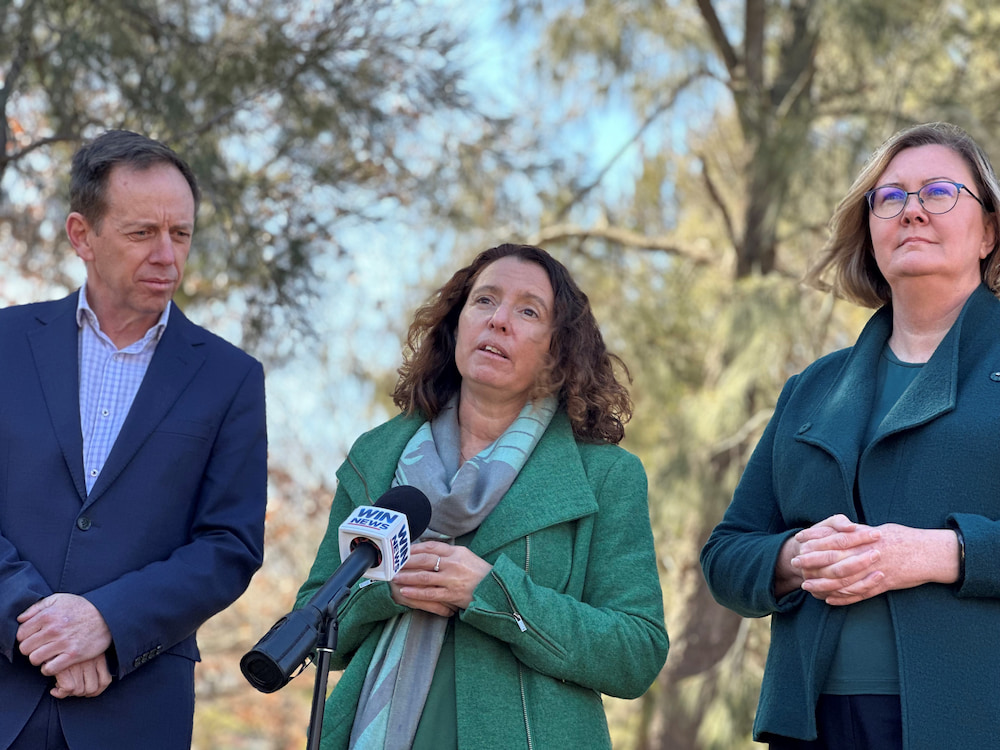The ACT Greens would establish a $50 million ‘Bush Capital Restoration Fund’ to restore and reconnect long-lost habitat.
They would also provide funds to restore habitats, manage invasive species, protect vulnerable species, and prevent other species from becoming endangered; expand reserves and protect ecologically valuable places such as Bluetts Block and Ainslie Volcanics; build First Nations capacity and leadership to jointly manage reserves and waterways; strengthen environmental laws; and create an ecological framework to protect nature within reserves, farmland, and public unleased land.
“As the bush capital of Australia, we have a responsibility to lead the nation in fighting climate change and protecting our natural environment,” the party’s deputy leader, Rebecca Vassarotti, said.
“But at the moment, Canberra is home to a devastating list of 72 threatened species which will only get bigger without significant investment.
“For years, governments have barely injected enough money to stave off environmental collapse, but nowhere near enough to regenerate and restore habitat and waterways to allow ecosystems to thrive.
“While existing restoration projects are a step in the right direction, they often don’t get enough funding to be done in conjunction with the other restoration work that is needed across Canberra to comprehensively restore our environment.
“If we are to truly protect our city’s status as the bush capital of Australia, we desperately need to fund long-term, ambitious projects which don’t just protect our environment, but which actively restore and reconstruct long lost native habitat and waterways.
“The ACT Greens new ‘Bush Capital Restoration Fund’ will restore all of Canberra’s environment, not just patches here and there. Our fund will deliver real, practical outcomes, from building land bridges, to reintroducing species and more.
“In the middle of a climate crisis, Labor’s austerity is stopping our environment from reaching its full potential. The Greens will make sure we invest in, protect and preserve our natural environment.”
ACT Greens leader Shane Rattenbury said the Bush Capital Restoration Fund would be the bedrock of a new era in environmental restoration work in Canberra.
“The ACT Greens plan for a new Bush Capital Restoration Fund will fundamentally transform how we undertake conservation and restoration in the ACT to deliver healthier catchments and resilient ecosystems,” Mr Rattenbury said.
“Our fund will be implemented in collaboration with Traditional Custodians to make sure they are embedded into decision making.
“This Fund is the foundation of a comprehensive suite of changes the Greens are announcing today aimed at lifting environmental restoration and protection across the territory, making this work a core government priority.
“For too long, construction on the edges of our suburbs has pushed many native ecosystems into increasingly precarious situations.
“We need suburbs which are built in harmony with our natural environment. The ACT Greens will achieve this by imposing limits on how far our city can expand, and expanding our reserves so that we can best protect endangered habitat.”
Adele Sinclair, ACT Greens candidate for Ginninderra, said: “As an environmental volunteer, I often hear frustration and despair about the decline of our natural environment around the ACT. We’ve lost understorey habitat through most of our suburbs, hundreds of mature native trees with hollows, and hectares of bushland on our urban edge.
“This has led to isolated patches of native vegetation, dominance of big birds, and a decline in small birds, insects, and other wildlife due to lack of food, shelter, and safe corridors.
“Canberra’s strong community of environmental volunteers is something to be proud of. Yet it’s also a sign of the frustration people feel, that they have to get out and try to fix things themselves.
“And when we as a community look to the government to fix environmental issues, we’re usually told ‘there’s no budget to do that’. Year after year, term after term. It’s time to prioritise the environment and give it the attention and budget it needs.”



